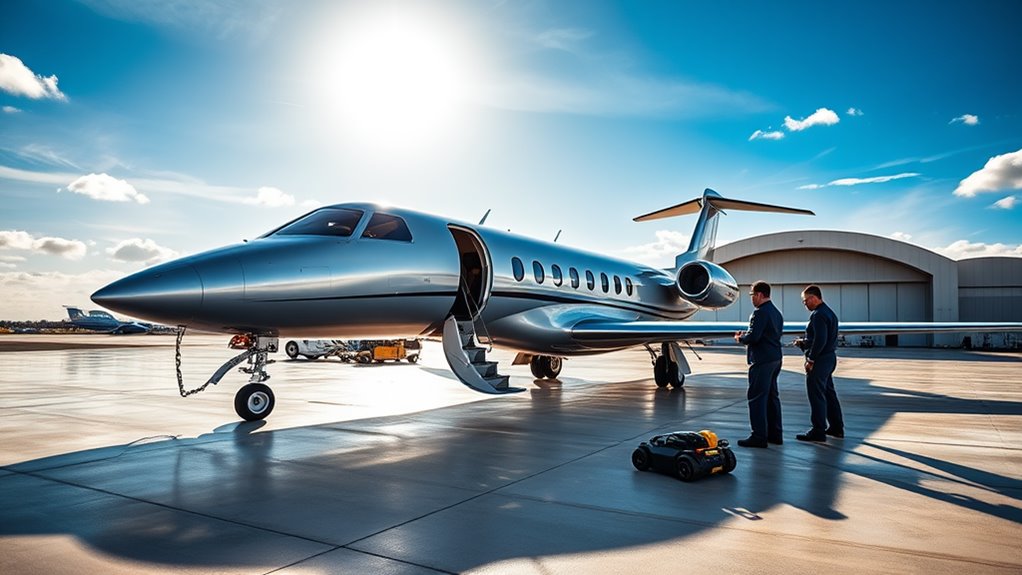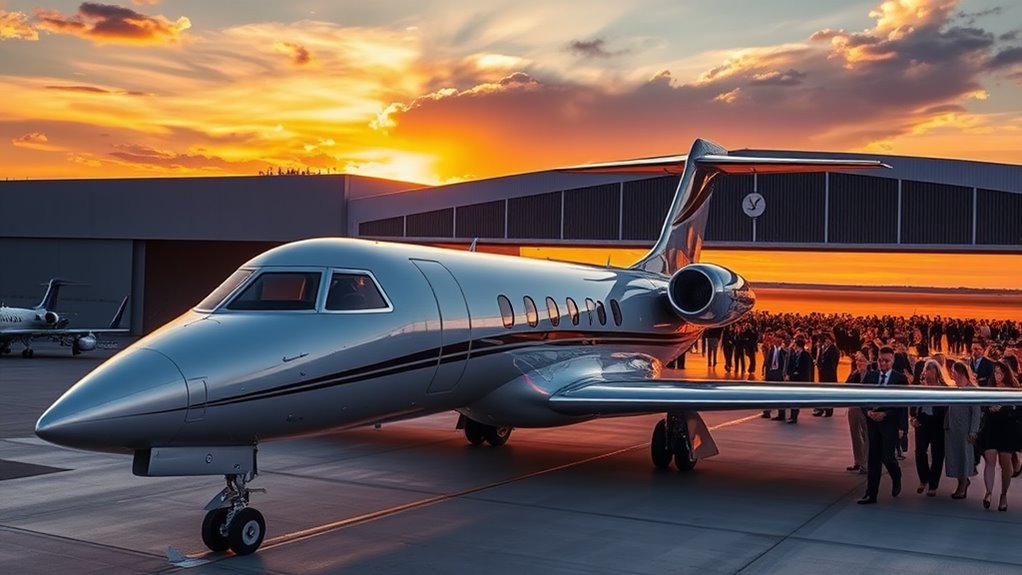Ever wondered why private jets cost an arm and a leg? It’s not just the fancy interiors and plush seats. The price tag includes a wild mix of initial costs, ongoing expenses, and market quirks. Imagine spending millions upfront and then shelling out even more for maintenance, insurance, and crew salaries. Sounds crazy, right? But trust me, there’s more to this high-flying financial puzzle that you’ll want to know about.
The High Costs of Private Jet Ownership
When you think about owning a private jet, it might sound like a dream come true.
But let’s get real—it’s a costly affair. The initial investment can start at $5 million and soar past $110 million!
Then, there are annual operating costs, which can hit $4 million. Yep, that’s a hefty price tag for fuel, maintenance, and crew salaries.
Speaking of crew, you’ll need to fork out over $200,000 just for them.
And don’t forget those sneaky extra expenses like hangar fees and regulatory compliance.
Aircraft depreciation hits hard, too—your jet loses value fast, just like a new car. Additionally, ongoing operating expenses can fluctuate significantly based on fuel costs and aircraft size, making budgeting essential.
Factors Influencing Charter Prices
Charter prices for private jets can feel like a rollercoaster ride, and several factors dictate how high or low they go.
Initially, the type and size of the aircraft matter. Light jets? They’ll cost you around $1,300 to $3,000 per hour. Big jets? Expect $8,600 to $13,000.
The type and size of the aircraft are key—light jets range from $1,300 to $3,000 per hour, while big jets soar from $8,600 to $13,000.
Distance? It’s essential. Short flights start at $6,000, while longer ones might hit you with extra fees.
Then there are supplementary costs, like fuel surcharges and airport fees, which can pile on quickly. If the plane’s at a different airport, you’ll face repositioning fees.
Oh, and don’t forget those empty leg flights—they can save you cash, but you’ll need to be flexible. Additionally, your total cost will also be impacted by annual operating expenses that can reach up to $1 million or more.
Get ready; it’s a bumpy ride!
Operational Expenses and Maintenance

Owning a private jet isn’t just about luxury; it comes with a hefty price tag in operational expenses and maintenance. You’re looking at annual costs that can soar between $500,000 and $4 million!
Sure, it sounds glamorous, but let’s break it down.
Maintenance is no joke; those rigorous inspections cost a pretty penny and are way more detailed than your car’s check-up.
And fuel? Well, brace yourself to pay more than you ever thought possible, especially when prices fluctuate.
Don’t forget insurance, which runs between $5,000 and $10,000 annually—ouch!
Plus, hangar fees can vary wildly.
Aircraft Engineering and Certification
Flying private might seem all about luxury, but there’s a whole engineering world behind those sleek jets.
Aircraft engineering isn’t just about cool designs; it involves serious science and tech. The certification process by organizations like EASA and FAA takes around three years, which means hefty costs.
Here’s a quick rundown of what drives those expenses:
- Complex designs and advanced materials elevate manufacturing costs.
- Prototypes need extensive testing, adding to the budget.
- Safety failures can mean expensive redesigns.
- Advanced avionics systems can cost more than a car!
Market Demand and Production Limitations

Regarding private jets, the market’s a bit like a secret club—exclusive and not exactly overflowing with options.
With only 2,443 general aviation planes delivered in 2019, production limitations kick in, driving prices up. You see, there are around 446,000 aircraft worldwide, but that low market saturation means high demand pushes prices even higher.
With just 2,443 general aviation planes delivered in 2019, limited supply fuels soaring prices amid high demand.
Designing and certifying these aircraft is no cakewalk. It takes about three years to get a new model approved, adding to costs.
Plus, if you want to fly one, you need a pilot’s license and training. That adds barriers to entry for buyers.
Exploring Cost-Effective Alternatives
Here are some cost-effective alternatives to evaluate for your next private air travel experience:
- Hourly Charters: Flexibility at a lower hourly rate, starting around $1,300.
- Fractional Ownership: Share costs with others, starting as small as 1/16th of a jet.
- Jet Cards: Pre-purchase flight hours at stable rates, minus the commitment.
- Empty Leg Flights: Score big savings by flying when jets return to base.
Additionally, consider exploring jet sharing membership programs that allow you to enjoy private flying without the high costs of ownership.
Frequently Asked Questions
Why Do Private Jets Cost so Much?
Private jets cost so much due to luxury amenities and high operational expenses. You’ll also face steep depreciation rates, as ownership involves significant initial investment and ongoing costs that contribute to their total price tag.
How Do People Afford Private Jets?
You can afford private jets through financing options, taking advantage of leasing benefits, or exploring shared ownership models. These strategies reduce upfront costs, making private air travel more accessible for those who need it.
How Much Does It Actually Cost to Own a Private Jet?
Owning a private jet feels like launching a money rocket! You’re looking at a purchase price between $5 million and $110 million, plus soaring maintenance costs and operational expenses that can hit millions annually. Brace yourself!
What Is the $30 Million Dollar Private Jet?
A $30 million private jet boasts luxury features like spacious interiors and advanced avionics. You’ll face significant maintenance expenses and ongoing costs, driven by high market demand for these premium, comfortable flying options.
Conclusion
In the end, owning a private jet isn’t just about luxury; it’s a financial rollercoaster. Those shiny planes come with hefty price tags and ongoing costs that can make your head spin. But hey, if you’re dreaming of soaring through the skies, bear in mind that there are smarter, budget-friendly ways to fly. Whether it’s sharing a jet or exploring other options, you can still catch that cloud nine feeling without breaking the bank. Keep dreaming big, but stay savvy!